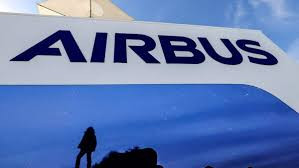Airbus Considers Stretching A220 Jet to Revive Demand in Softening Market

IIE DIGITAL DESK : The effort to breathe new life into its A220 program, Airbus is exploring the development of a stretched version of the aircraft, potentially dubbed the A220-500. This strategic move comes amid dwindling demand for the current A220 variants and increasing concern over the long-term sustainability of the program as backlogs begin to shrink and new orders remain scarce.
The A220 jet family, originally designed by Bombardier and now fully controlled by Airbus, has long been touted as a fuel-efficient and passenger-friendly solution for short to medium-haul travel. Its current variants—the smaller A220-100 and the more popular A220-300—have found favor with a number of global carriers. However, production and supply chain challenges, coupled with a lack of fresh momentum in new orders, have cast a shadow over its future. Despite delivering around 75 aircraft this year, Airbus has not recorded a single new order for the A220 in 2025 so far, and at current rates, the existing backlog could be exhausted by the early 2030s.
The potential A220-500 would feature a longer fuselage capable of carrying approximately 180 passengers, bringing it closer in capacity to Airbus's own A320neo and directly challenging Boeing’s 737 MAX 8. While the design would likely retain the current wing and engine configurations—powered by Pratt & Whitney’s geared turbofan engines—the increased size could sacrifice some range, pushing the aircraft into a different segment of the market that prioritizes capacity over distance.
Airbus is weighing the commercial viability of this stretch version. The manufacturer has made it clear that any decision to proceed would depend heavily on firm interest from key customers. Preliminary conversations with major airlines suggest that there is a healthy appetite for such an aircraft, especially from operators who are looking to bridge the gap between regional jets and full-size narrowbodies. AirAsia, for instance, is reportedly in advanced talks to acquire up to 100 A220 jets, which could potentially include the new stretched version. European carriers like LOT Polish Airlines have also shown interest in expanding their A220 fleets, indicating potential demand across different regions.
Airbus sees the A220-500 as a critical step in expanding the aircraft family’s market reach. Executives have stated that offering a stretched variant could help protect the program from stagnation and enhance its appeal to larger airlines seeking more flexibility within a single-aircraft type. However, developing and certifying a new aircraft variant is a complex and resource-intensive endeavor. Airbus must also consider whether the A220-500 could cannibalize sales of the A320neo, its best-selling model. A poorly timed or poorly positioned launch could disrupt its narrowbody strategy rather than complement it.
Airbus continues to struggle with manufacturing constraints. Engine supply issues, particularly with Pratt & Whitney’s PW1500G engines, and production delays at key supplier sites such as Spirit AeroSystems have affected A220 delivery timelines. Airbus has publicly acknowledged that achieving its target of producing 14 A220 jets per month by 2026 hinges on resolving these supply chain challenges. The integration of new facilities and production improvements are underway, but the benefits are not expected to materialize immediately.
The Paris Airshow, scheduled for later this year, may serve as a pivotal moment for the A220 program. Airbus is expected to use the global stage to rally support and potentially announce the formal development of the stretched A220-500 if sufficient commercial interest is confirmed. For now, the aircraft remains a promising idea, one that could inject much-needed momentum into a program that was once hailed as a game-changer but now faces an uncertain path forward.
As competition intensifies in the narrowbody segment and airlines become more selective in their fleet modernization strategies, Airbus must act decisively. Whether the A220-500 becomes a reality may depend not only on customer interest but also on Airbus's ability to manage internal risks and maintain a coherent product strategy in an evolving aviation landscape.
You might also like!
















